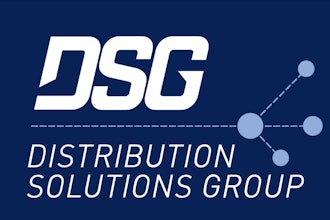
Like any business, distributors typically own several classes of assets, such as equipment, inventory, real estate or leases, information technology systems, and distributor rights agreements. Undoubtedly, each distributor has taken prudent steps to protect its assets from theft or damage, such as securing insurance and ensuring security.
Many otherwise-savvy business owners have a blind spot, however, when it comes to taking steps to protect some of their most valuable assets: their intellectual property portfolio (IPP).
Your IPP can include your company’s name and brand, and derivatives thereof, creative works, patented inventions or methods, trade secrets, confidential or proprietary information that gives it a leg up in the market, or “know-how” which is equally valuable and disclosed on a need-to-know basis. But each asset in your IPP shares a common characteristic: they are all vulnerable to infringement, dilution, misappropriation or even misuse unless “ownership” is clear and you take affirmative steps to prevent such malfeasance in the first place and/or respond quickly and aggressively when any such conduct is discovered.
While the most common forms of protection, detailed below, are essential to properly protecting an IPP, the most important thing you can do to protect your company’s IPP is to work with an experienced intellectual property lawyer who can:
- Take a full inventory of your intellectual property
- Review and address any vulnerabilities or deficiencies that might exist
- Set up the business means to monitor the marketplace
- Ensure that all IPP assets are fully protected – meaning the maximum scope of protections are in place for any particular IP asset, and
Respond aggressively to any acts that threaten the value or strength of these assets.
Distributors should also work with counsel to ensure that any elements of its IPP are properly protected, internally and externally, such as with proper IP confidentiality, vendor, ownership, licensing and similar agreements.
Know What Kind of IP Assets You Have
The following are some foundational tips for ensuring IP protection for a business’ IPP:
- Trademarks: A trademark is a word, symbol or phrase – such as a logo, company or product name, or slogan – used to identify and distinguish your business, goods or services in the marketplace. Your company’s “brand” largely consists of trademarks, but may also consist of service marks and/or even trade dress rights in the look and feel of a particular good or product (such as a unique branded display counter).
- Copyrights: A copyright is the ownership interest you have in a creative work fixed in a physical medium, such as writing, photos, artwork, computer code or website content.
- Patents: Patents cover “inventions,” such as a new and novel product, method, process or innovation.
- Trade secrets: A slightly different kind of IP, trade secrets are comprised of any confidential information that gives your company an advantage over your competition — provided several elements are satisfied. This can include customer information and lists, special formulas, business processes and know-how unavailable to others.
Federal Trademark Registration
While a distributor need not obtain a federal trademark registration before using a name or logo for its business or one of its goods or services, there is good reason to do so, including to establish presumptive ownership and validity of the mark, and possibly that it is distinctive. Additionally, registration has many other benefits, including ensuring that the mark is not owned by someone else, deterring others from using your mark (as registrations are often, if not always, accompanied by a trademark or infringing name search), and to secure maximum rights should a cease and desist demand be made or suit filed. An owner of a registered mark can also utilize the federal trademark registration symbol - ® - with their mark.
Copyright Registration
The creator or author of a creative work holds at least a copyright to that work the instant they put it in tangible form. Even without registration, a copyright owner has the right to control how their work is used and who uses it.
While unregistered creative works have some protection, registering a copyright for IPP assets that add value to your business is relatively inexpensive. Registering your copyright with the U.S. Copyright Office provides you with additional legal rights and remedies, can deter infringers (including by utilizing the well-known © registration symbol), and provide similar rights as a trademark owner. For example, while a copyright owner can sue to recover any actual damages or losses they incurred due to the infringement, a sum that can be enormous if the protected content was reproduced and seen hundreds or thousands of times, a registered copyright owner can also elect to recover damages without the need to show that they suffered any damages at all.
Patent Marking
Just as the registered copyright symbol © and trademark symbol ® provide notice to others that the creative work or mark is protected under federal law, patents have their own marking rules. “Patent marking” means displaying the patent number – or the URL for a website containing the same information – on a patented product.
Proper patent marking (and there are detailed rules about what constitutes proper marking) puts potential infringers on notice that a valid patent protects the invention. When an invention is marked in compliance with the law, the law presumes that an infringer would have or should have known about the patent’s existence as displayed on the product. As such, they could be held liable for damages that extend farther back in time than they otherwise would. Without patent marking, the clock starts ticking on damages only from the date the patent owner provides actual notice of infringement to the alleged infringer. Proper patent marking starts the period for which a patent holder can recover damages without actual notice of infringement.
Protecting Trade Secrets, Proprietary Information
Most prudent businesses make significant efforts to ensure that their confidential trade secrets and proprietary information – from customer lists to business methods – remain secret. These steps are critical to maintaining a claimed trade secret from misappropriation. In addition to keeping data and computer systems secured and limiting access to such information, maintaining physical secrets in a vault limited to use, and keeping strict inventory of use, can greatly enhance trade secret status, and should be used in conjunction with the types of agreements detailed above. Trade secret remedies can be significant, including injunctions, destruction orders, damages, attorney’s fees, and other compensable litigation expenditures.
Fred Mendelsohn is a partner at Burke, Warren, MacKay & Serritella in Chicago. Distributors are encouraged to direct questions to Fred at 312-840-7004 or [email protected].
The information contained in this article is provided for informational purposes only, and should not be construed as legal advice on any subject matter. The author expressly disclaims all liability in respect to actions taken or not taken based on any or all the contents of this article.






















